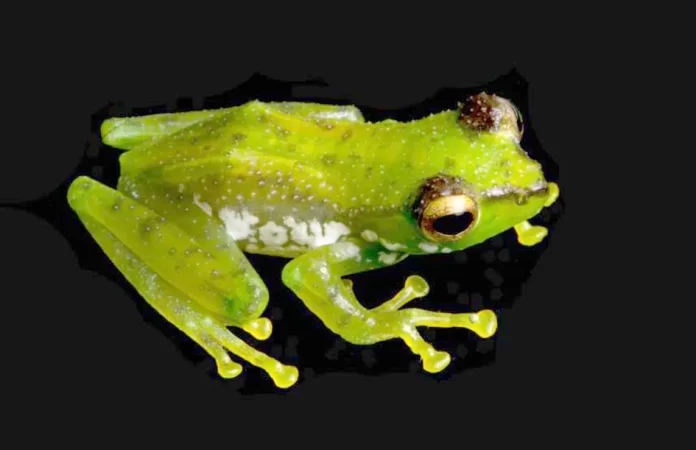ITANAGAR, 28 May: A new green tree frog species has been discovered from Arunachal Pradesh by a team of researchers from Dehradun (Uttarakhand)-based Wildlife Institute of India, Dresden (Germany)-based Senckenberg Natural History Collections, and the Namdapha Tiger Reserve (NTR).
The frog has been named the Patkai green tree frog (Gracixalus patkaiensis), after the
historical Patkai hills range, where the NTR lies.
The frog was found by the team during a herpetological exploration in the NTR in 2022, and their finding was published in the latest issue of the journal Vertebrate Zoology.
The team informed that this is the sixth new frog species discovered from the NTR.
“Currently, the genus Gracixalus is known by over 15 species. However, before this discovery, species of this genus was not reported from India, which was earlier only known from Vietnam, Laos, Thailand, southern China and Myanmar,” the researchers said.
“The newly discovered Patkai green tree frog was found in a unique habitat inside the evergreen forest of the tiger reserve, characterised by marshy area covered with cane, bamboo, rattan palm, fern and wild zingiber,” they said.
The researchers added that “this frog is so far known only from Namdapha Tiger Reserve – one of the largest protected areas of Northeast India.”
The Patkai green tree frog is a small species with a body size of 23-26 millimetres. The call of this frog is very similar to that of insects, and these frogs breed in swampy areas during monsoon season.
Its closest relative, Gracixalus gracilipes, is found in China, Thailand and Vietnam, according to the study. The new species has been described based on morphological and molecular study, along with calling pattern.
“Although protected areas are the cornerstone of wildlife conservation, a detailed inventory of species is needed for better management of these protected areas,” the researchers said, adding that “the discovery of this new species might serve as an example for other protected areas, especially the least explored ones along the eastern borderland of India.”
“Apart from this, such research can help in trans-boundary conservation initiatives and future recognition of the area as a UNESCO World Heritage site,” they added.



